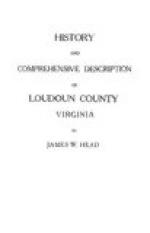“In the meantime the enemy pressed heavily on Lieutenant Walton. He had repulsed two mounted charges, but being outflanked by dismounted men, had been withdrawn about fifty yards behind a house and orchard, in which position he commanded the only opening through which the enemy could attack. Here three distinct charges were met and repulsed in counter-charges by the 5th Virginia Cavalry, by the 3d squadron of the 4th regiment, led by Lieut. A.D. Payne, and by the 2d and 5th squadrons of the same regiment, led by Capt. W.B. Newton. These were the only squadrons of this regiment present at this battle, the 1st and 4th squadrons having been detailed early in the day to accompany General Stuart. In each of these charges the enemy had suffered severely at the hands of Lieutenant Walton’s sharpshooters, who poured volleys into their flanks as they passed him in advancing and retiring.
“As Walton’s party was, however, evidently small, the enemy determined to dislodge him, and was preparing a considerable force for another attack, when the 2d and 3d Virginia Cavalry reached the field. Two squadrons of sharpshooters were at once dismounted and placed on the left of the road—the squadron from the 2d regiment under Captains Breckinridge and Graves, that from the 3d regiment under Capt. George D. White. Their line was advanced to the stone wall from which Lieutenant Walton had been withdrawn. Colonel Munford now felt that his position was secure against an attack of cavalry, and there was nothing he more desired than that the enemy should wear himself out against it. His flanks were secured by Little River and its tributaries. The enemy must necessarily attack his front. The road by which it was approached was worn, as it ascended the hill, into deep gullies, which compelled an attack in column of fours and prevented the enemy from spreading out his front. Munford’s strong party of sharpshooters commanded the road. They were stationed in an enclosed field, with a stone wall in their front, a post and rail fence on their right, and another fence on their left. The fences to the rear were thrown down, so as to give the cavalry access to the field. Munford felt that unless his cavalry failed in their duty, his dismounted men were perfectly secure.
“The 2d Virginia Cavalry, led by Lieut.-Col. J.W. Watts, now charged the advancing enemy, who had penetrated beyond the position of the sharpshooters. The heads of the columns met in the narrow road in a hand-to-hand sabre fight. While this was in progress, Capt. Jesse Irving threw down the fence on the right of the road, and, bringing his squadron to the front, opened fire on the enemy’s left flank. Capt. W.W. Tebbs executed a similar movement on the left of the road, while the sharpshooters were all the time firing into the enemy’s rear. Their attack was completely broken, and their leading squadron almost destroyed. Another support moved up during the confusion, but was met and repulsed by Colonel Rosser. In this fight Lieutenant-Colonel Watts was wounded and permanently disabled. The command of the 2d regiment devolved on Major Cary Breckinridge, who moved the regiment off to the right to reform, carrying with him Col. Louis P. De Cesnola and the colors of his regiment, the 4th New York Cavalry.




